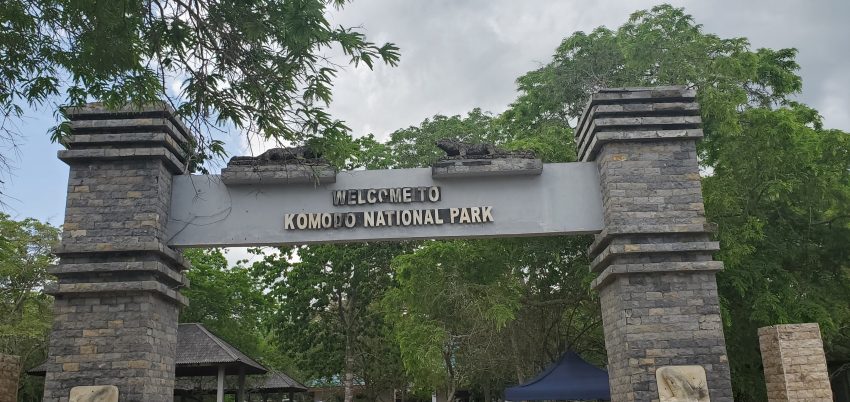We have all seen pictures of Komodo dragons. They are the stuff of legends – dinosaurs that still walk among us! When we had the opportunity to visit Komodo National Park, and perhaps see a dragon or two in person, we leapt at the chance.
The only way to access the park is on a verified tour so we booked one through our cruise ship. The allocated time was 2 hours, but we were assured it was plenty of time to walk through the park. The safety briefing was clear but did little to lessen the concern after everything we had read. We were accompanied by a local guide, armed only with a long handled stick with a short Y at the bottom, which I assume was to discourage an approach. Considering the size of our guide, the size of the stick and the reported size of Komodo dragons I had my doubts as to its effectiveness. Despite all that we were anxious to start, staying on the beaten path of course.
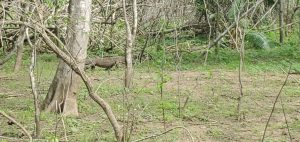
Komodo dragons can only be found on five islands within Indonesia. The biggest, where the National Park is located, currently houses a population of 1692. Deemed the largest lizards on earth, there are approximately 3000 more on the other four islands where they reside. Komodos cannot thrive in any other area because they cannot coexist with humans or their pets – they will try to eat them. While the islands do contain some natural prey for the Komodos it is very likely they are fed in the national park.
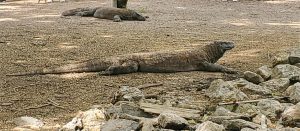
Komodos are venomous and can take down large prey. They are also very agile, running up to 11 mph in short bursts, and they can swim, which was a surprise to me. The average life span of a male Komodo is 30 years. Considered endangered because as they only exist on a few islands in Indonesia, their numbers have remained stable.
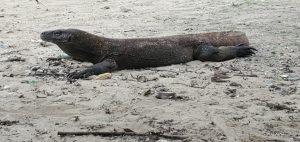
We did see a small one walking away from us as we entered the park. For us that one sighting would have been enough. Further along however we encountered two very large ones resting near a water hole. From the number of tourists gathered around taking pictures and the relative relaxed nature of our guides we assumed they were fed and less likely to be aggressive, though still impressive in their grandeur and girth.
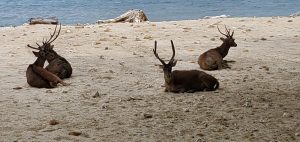
At the end of our walk we spotted four deer resting in a clearing on the beach. From their vantage point they could see any and all approaching predators. They lay comfortable in the knowledge that they could outrun an approaching attacker and the fact that the number of humans nearby were an additional level of safety. Lucky for them as we counted a total of four more Komodo dragons, all smaller in size to the two by the watering hole, wandering freely on the beach.
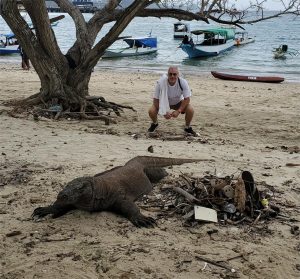 To have seen eight in total, all of varying sizes, was well worth the heat and humidity of the island. We also saw nesting sites and other evidence of their habitation. Komodo Island is listed as one of the 7 New Wonders of Nature and is also a UNESCO World Heritage Site because of its unique biodiversity.
To have seen eight in total, all of varying sizes, was well worth the heat and humidity of the island. We also saw nesting sites and other evidence of their habitation. Komodo Island is listed as one of the 7 New Wonders of Nature and is also a UNESCO World Heritage Site because of its unique biodiversity.
Komodo dragons are synonymous with Indonesia. Given the the opportunity to actually see one up close was beyond our expectations. But that is exactly what travel is all about – exceeding our expectations.
